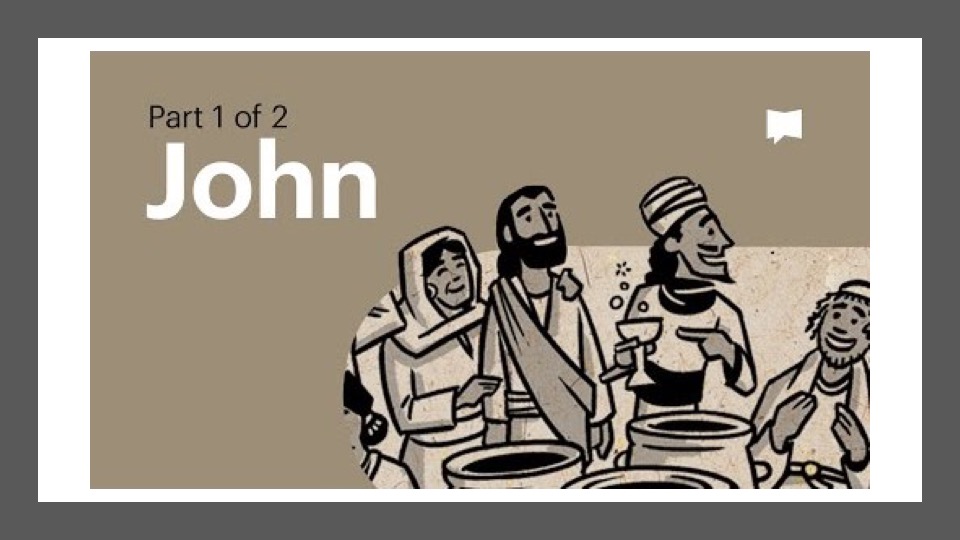Introduction Gospel of John
Introduction Gospel of John
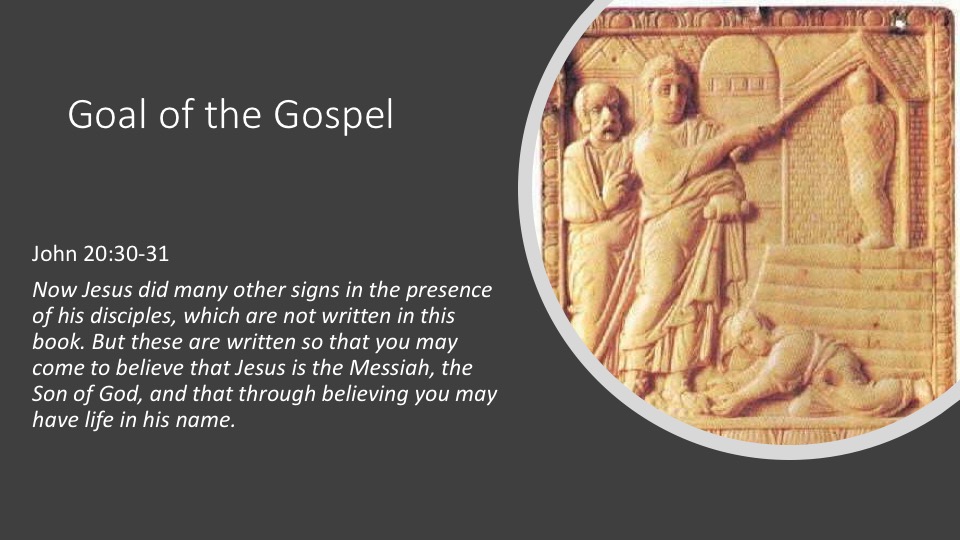
Interestingly, in the 20th chapter of this gospel the author effectively defined his goal in writing it. It can be found in John 20 :30-31
Now Jesus did many other signs in the presence of his disciples, which are not written in this book. But these are written so that you may come to believe that Jesus is the Messiah, the Son of God, and that through believing you may have life in his name.
gospel of John
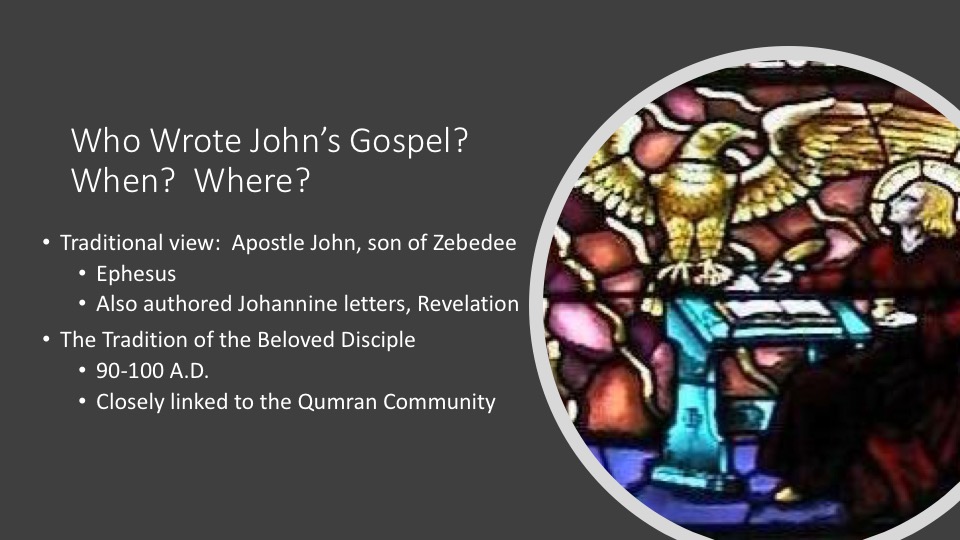
Like all the other Gospels (Matthew, Mark, and Luke) this gospel is anonymous. It does not clearly indicate who the author was. As time passed though the early church wanted to attribute the gospels to eyewitnesses, thus by tradition a view was developed that the author was the Apostle John, son of Zebedee, and that he wrote it while on the Isle of Patmos. That same tradition claimed that John also authored the other Johannine letters and the Book of Revelations.
For a variety of reasons, which we will not review today, many scholars today are dubious of those claims. Another tradition that developed was the tradition of the beloved disciple, since the Gospel of John makes a vague reference that the author may have been the beloved disciple, without identifying who that was.
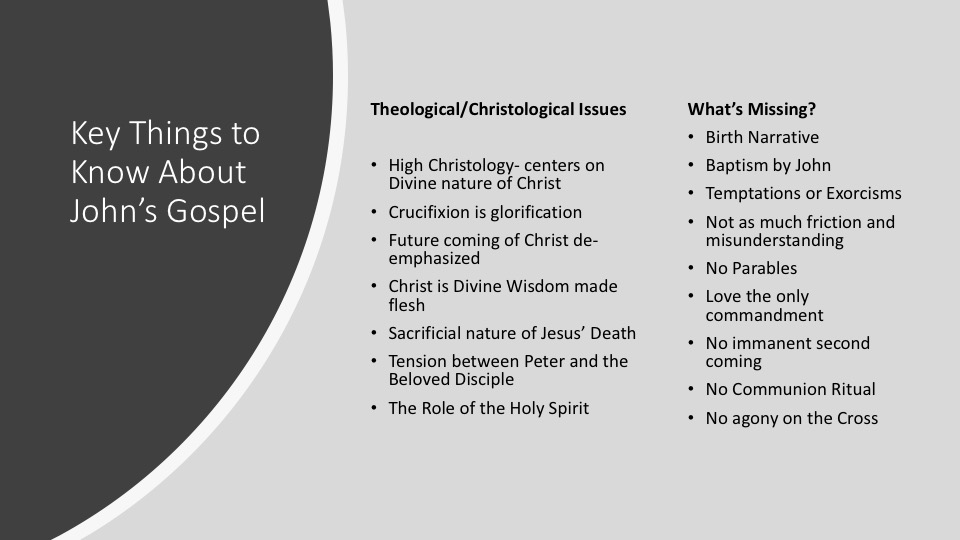
Key Things to Know About the Gospel of John
Theological/Christological Issues
- High Christology- centers on Divine nature of Christ
- Crucifixion is glorification
- Future coming of Christ de-emphasized
- Christ is Divine Wisdom made flesh
- Sacrificial nature of Jesus’ Death
- Tension between Peter and the Beloved Disciple
- The Role of the Holy Spirit
What’s Missing?
- Birth Narrative
- Baptism by John
- Temptations or Exorcisms
- Not as much friction and misunderstanding
- No Parables
- Love the only commandment
- No immanent second coming
- No Communion Ritual
- No agony on the Cross
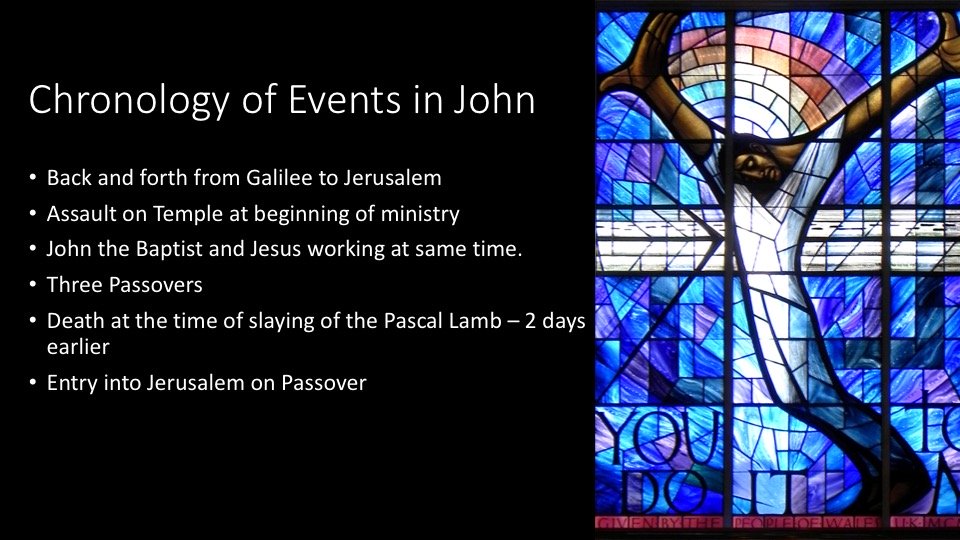
Chronology of Events in John
•Back and forth from Galilee to Jerusalem
•Assault on Temple at beginning of ministry
•John the Baptist and Jesus working at same time.
•Three Passovers
•Death at the time of slaying of the Pascal Lamb – 2 days earlier
•Entry into Jerusalem on Passover
Gospel Of John
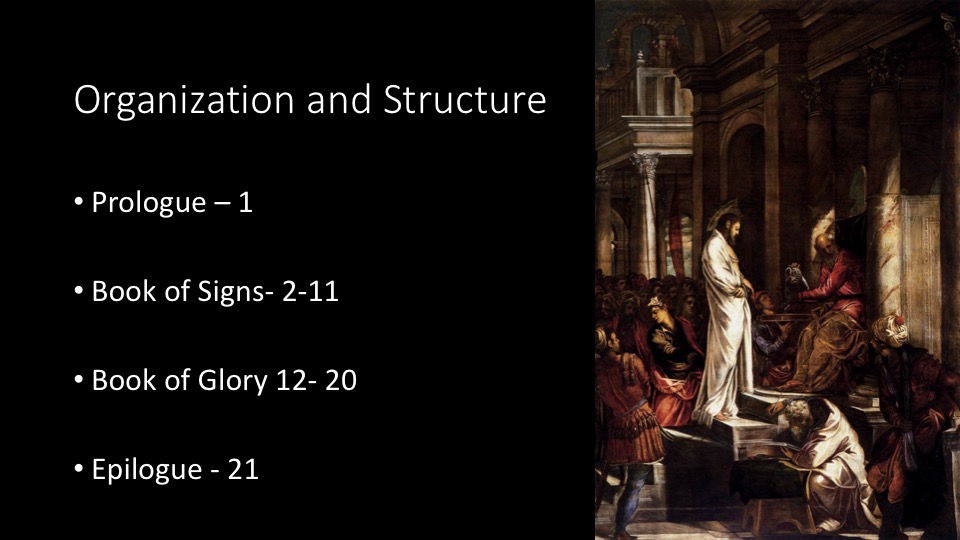
Organization and Structure
•Prologue – 1
•Book of Signs- 2-11
•Book of Glory 12- 20
•Epilogue - 21
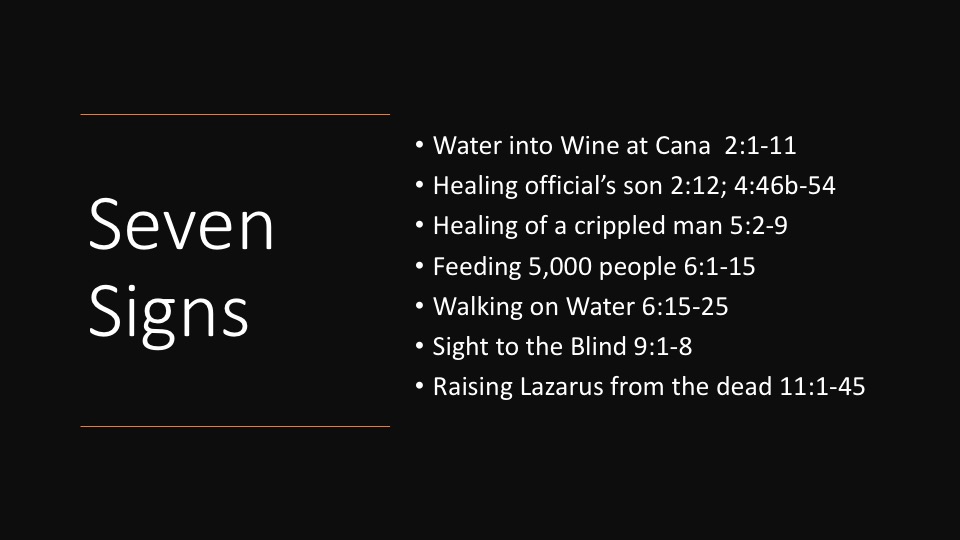
Seven Signs
•Water into Wine at Cana 2:1-11
•Healing official’s son 2:12; 4:46b-54
•Healing of a crippled man 5:2-9
•Feeding 5,000 people 6:1-15
•Walking on Water 6:15-25
•Sight to the Blind 9:1-8
•Raising Lazarus from the dead 11:1-45
